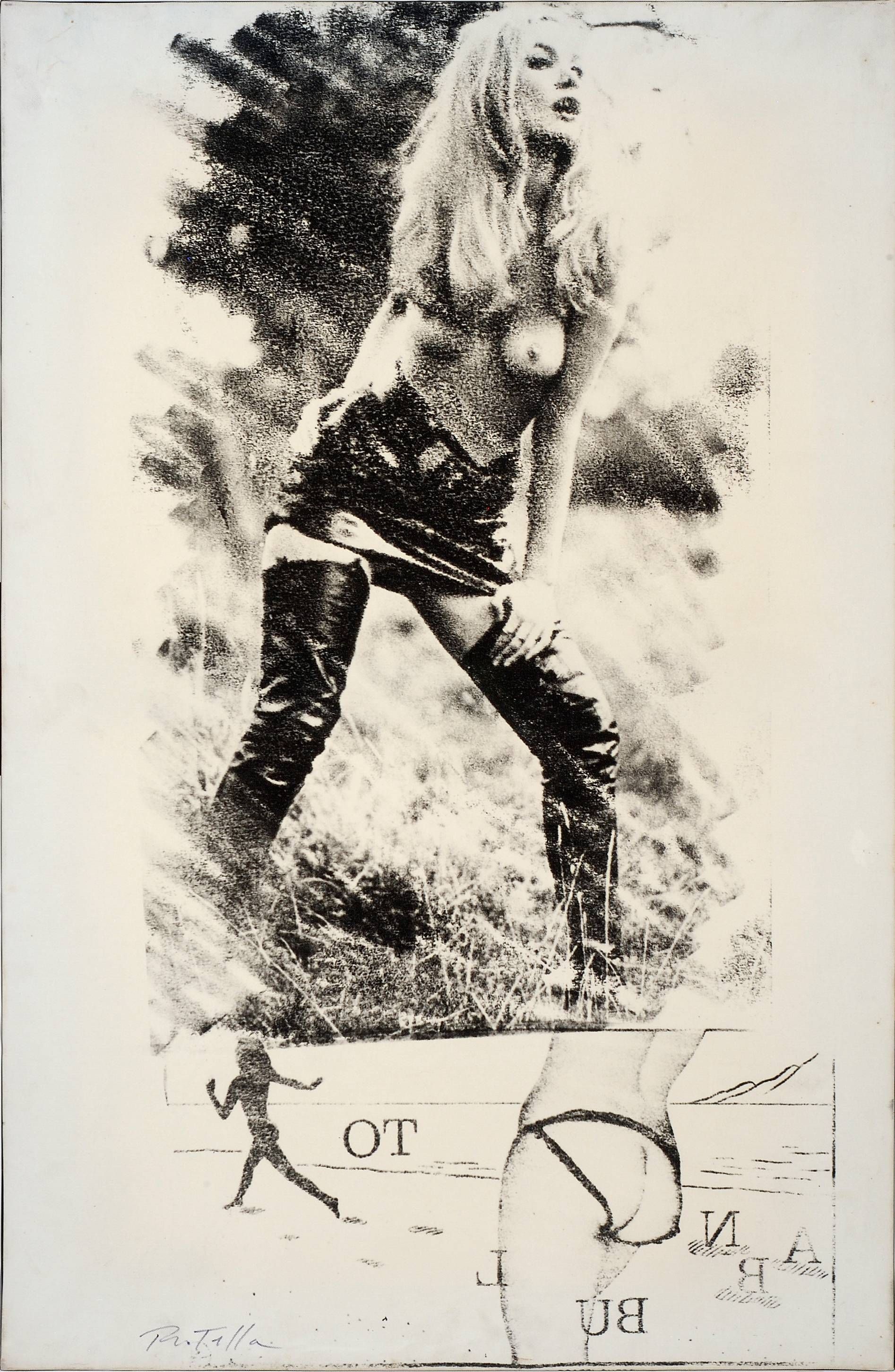
La chasse
La chasse, 1973 is an example of the use of photographic reproduction on canvas within Mimmo Rotella's practice, a technique which he begun working with in 1963 in a quest for mechanical painting and that can be considered a natural progression - or rather, reversal, of his creative, layering processes of décollage. He still uses posters and proofs in these works, alongside magazine and newspaper cuttings as well as photographs also of his own artworks, reaching a high degree of objectivity in forming the artist's iconography of the present. The procedure, which he calls reportage, involves choosing images, photographing them, projecting the blown-up negatives onto a canvas chemically treated with photographic emulsion to fix the image and when required, colouring. Reportage doesn't just refer to the technique - namely, the multi-stage transferral of images from one medium to another - it comments on the content of the works, bringing to the fore the artist's interest in exploring communication and media. The deriving photo emulsions are indeed recordings of contemporary events and their media dissemination, at once communicating and commemorating the images they capture. They play between temporal dimensions; speaking of something contemporary to the making of the work, of the reality of a document appropriated by the artist and through whose gesture is already blurring into memory.
The photo emulsion La chasse, 1973 is likely the combination of two separate images: one frottage occupying the upper portion of the image, and the reproduction of a magazine illustration at the bottom. The predominant image depicts a semi naked woman standing and leaning forward in a provocative pose, her long, fair hair partially covering her breast, wearing only a leather mini skirt and high boots, her image against a faded, heavily scratched background. The lower portion of the image is a mirrored erotic illustration of a rebus puzzle.
The work attests to the strong interest and fascination of Rotella towards erotic imagery, which he had been incorporating into his vocabulary since his stay in New York in 1968. That year, the artist had affirmed: “It is interesting to note that these stimuli – these are the new things that America inspired in me… I saw America as the most suitable terrain for making these new works of mine”. “Eroticism is very important in the life of a painter, partly as experience, partly as something, let’s say, progressive, like a lifeblood with which a painter nourishes himself to continue to create erotic or non-erotic works… I think I should express my ideas on this… My life pivots on it, on these sexual, erotic adventures, which, at a certain point, become the basis for our present and future work.”
1973
Photo emulsion on canvas
92.5 x 60.0 cm




